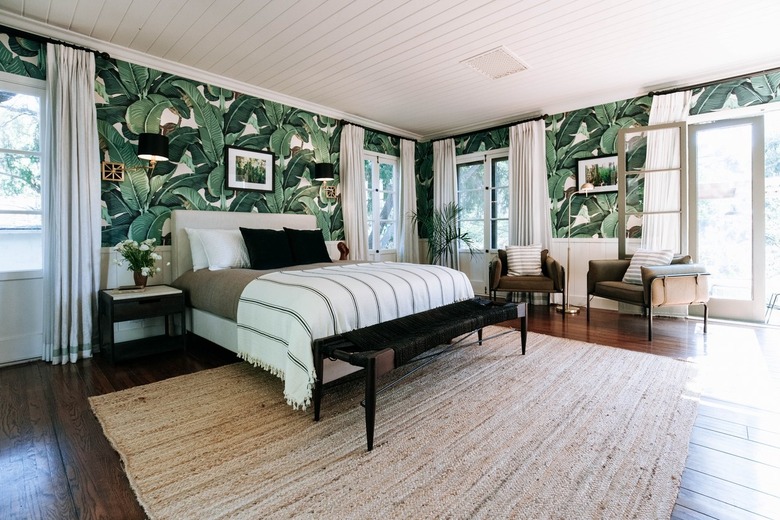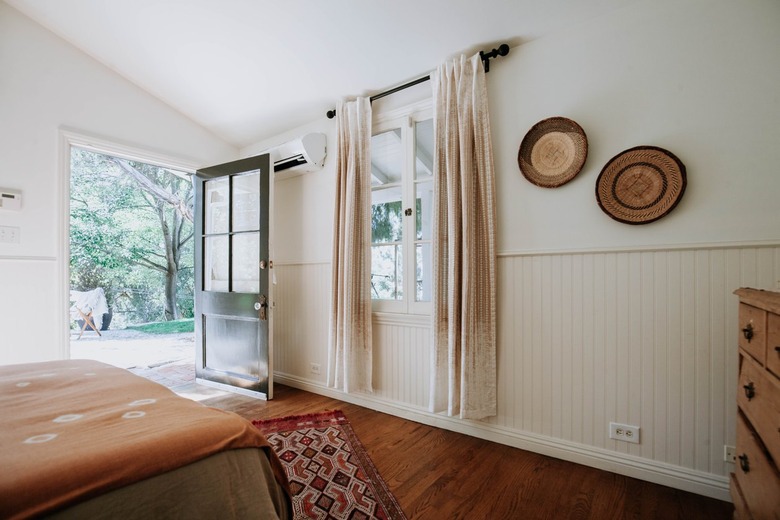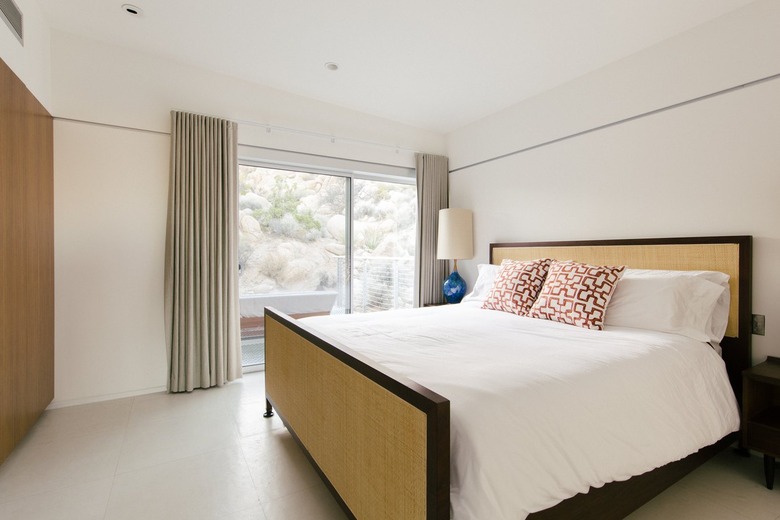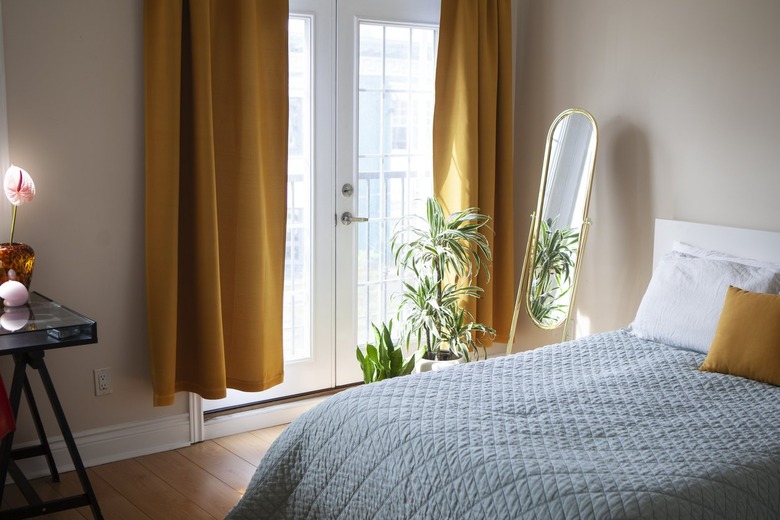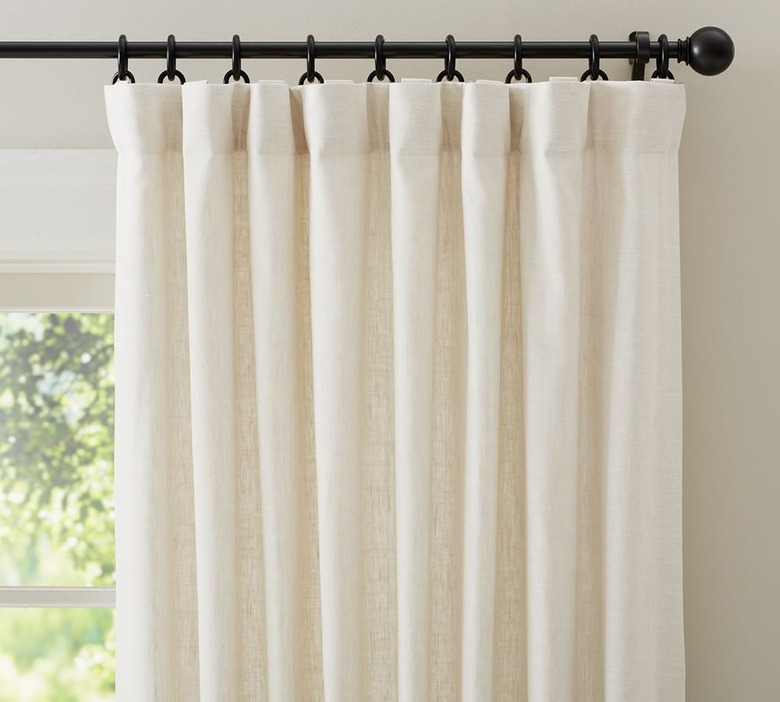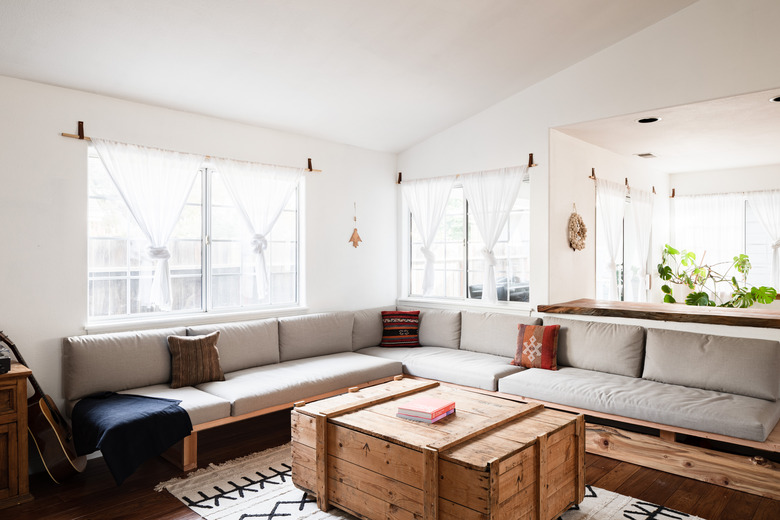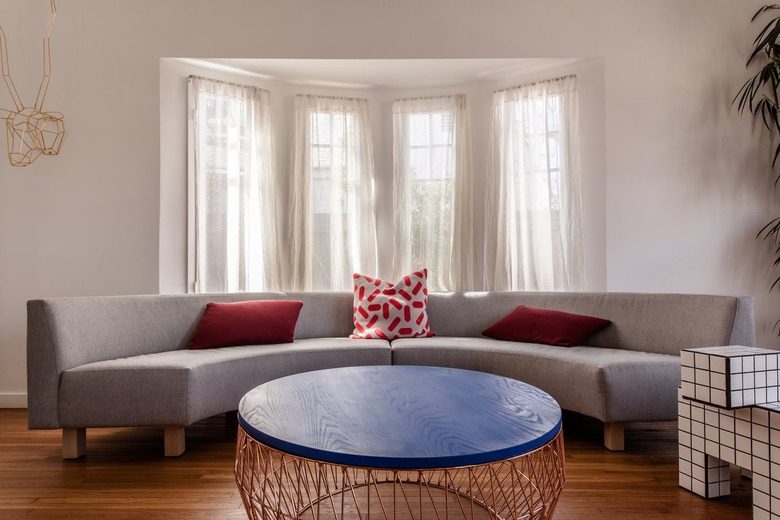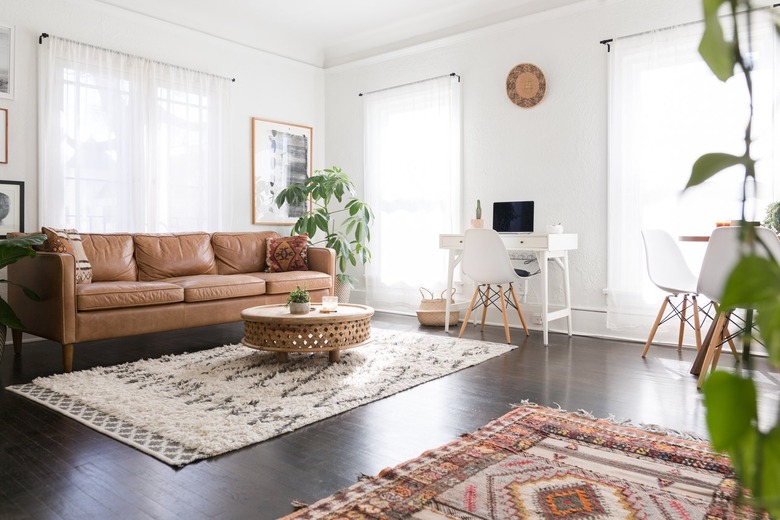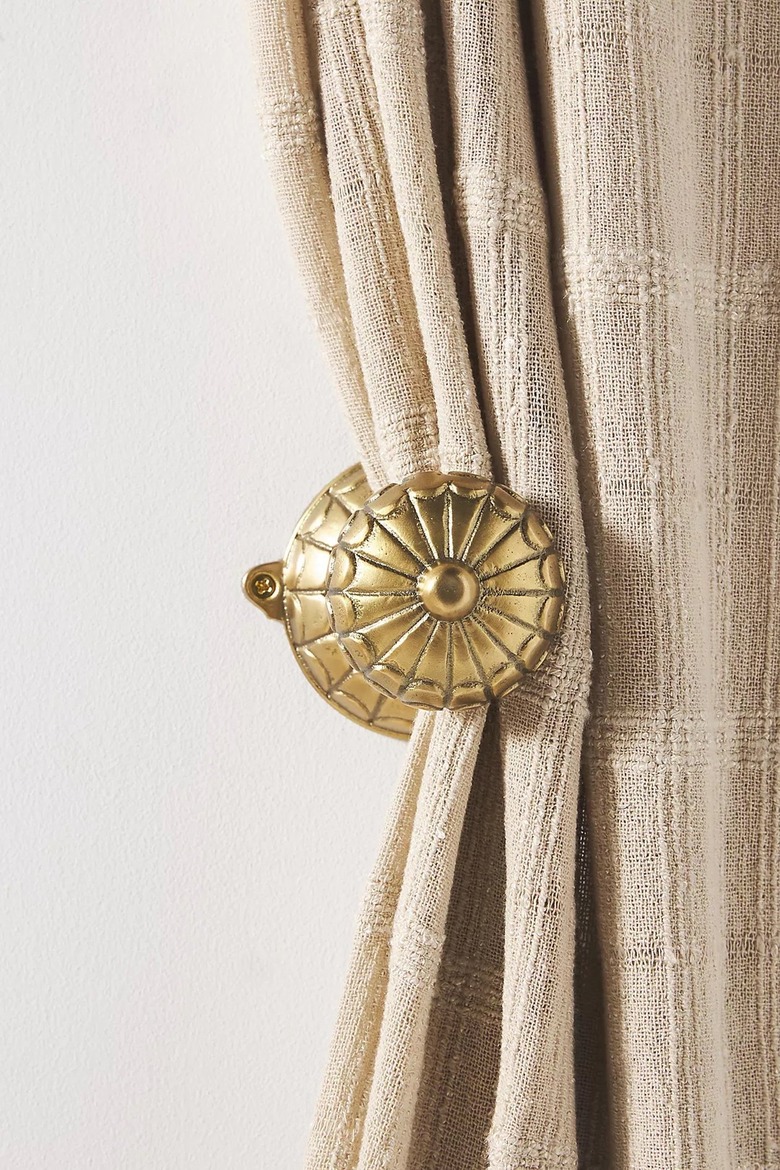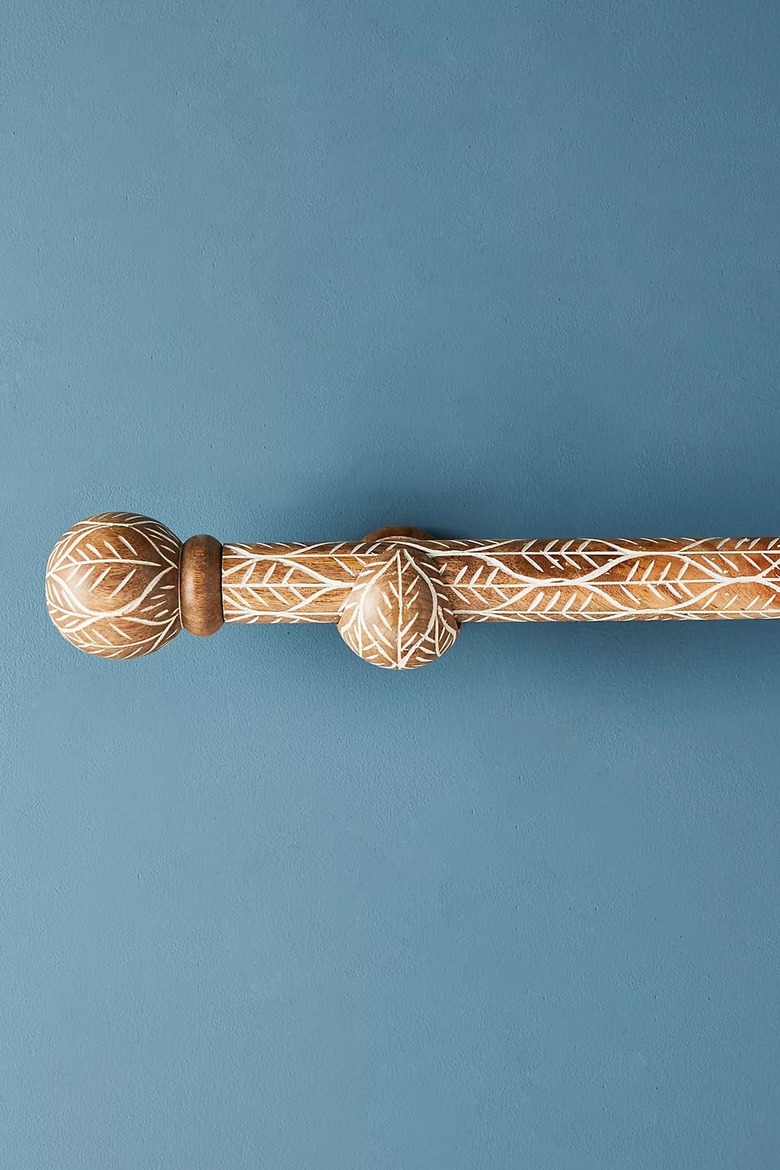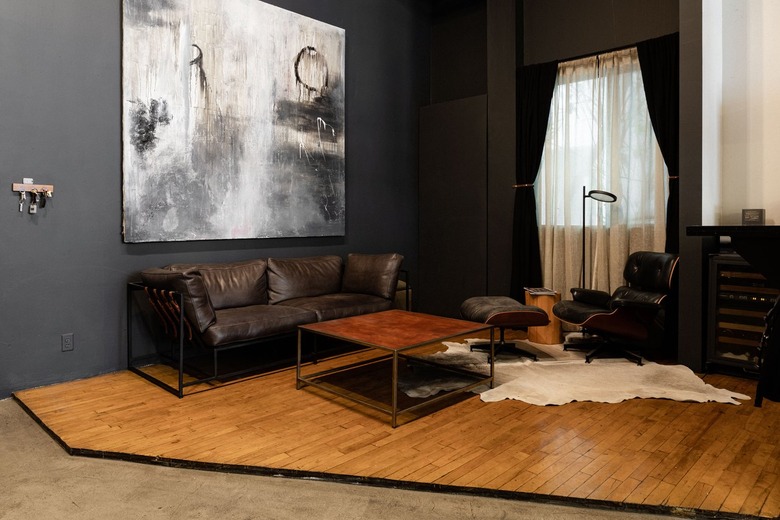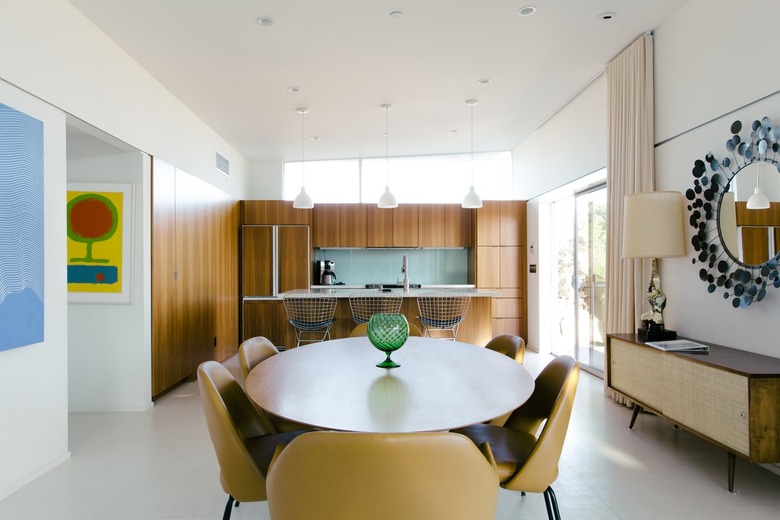14 Things To Consider Before Buying Curtains
We may receive a commission on purchases made from links.
Curtains are one of the first things that come to mind when most people think about window treatments — and for good reason. With so many different styles, lengths, colors, patterns, and fabrics, it's easy to find something that accents your decor perfectly. Sifting through all the options for curtains and drapes can be overwhelming if you don't know what to look for. Evaluate the major details to find the best curtains for your space, even if you don't have an interior design degree.
1. Formal vs. Casual
1. Formal vs. Casual
Window treatments blend in best with a room when they match its style, whether that be formal or casual. The curtain style, material, color, and pattern play into how formal or casual the window treatments look. For example, formal curtains with pinched pleats and elegant silk fabric look at home in a formal living room, while a flat panel made of casual linen works better in a casual space.
2. Color and Pattern
2. Color and Pattern
You want your curtains to look great in your space, and the color and pattern are an important part of that. When deciding between solids and patterns, consider other details in the room. If you already have lots of patterns on other decor pieces, solid curtains can help to keep things from becoming too busy. In a room with lots of solids, bringing in a print on the windows can spice up your decor and inject a little personality into the space. Textured curtains give you the best of both worlds, adding some interest with a raised pattern while keeping it subtle with a solid color.
When narrowing the color options, consider the overall color scheme of the room. A neutral color for your curtains makes them easier to blend with your home decor. Fading isn't as much of an issue with light, neutral colors as it is with darker or brighter colors.
If you want something more colorful, consider complementary colors that work with the hues already in the room, such as the wall color. You might pick out a color from an area rug and use it to choose the color of the curtains. This ties together the two pieces in the room's decor with accent colors you know will work.
3. Curtain Material
3. Curtain Material
Curtain fabric type is another important influence on the overall look and functionality of the curtains. Lightweight fabrics are flowy and romantic, but they sometimes don't have enough weight or structure to drape well. Thick, heavy curtains can be bulky and difficult to manage, especially when you open them. Balance the weight, structure, and texture to match the look you want for the room.
Consider the pros and cons of common curtain fabrics:
- Polyester: This is a common curtain fabric that's low maintenance, durable, and wrinkle-resistant, but it's not ideal for kitchen window treatments since it's flammable and can hold odors.
- Silk: Silk curtains are usually heavier and have a romantic, upscale look, but real silk is susceptible to sun damage and is dry clean only. Faux silk is a more durable alternative.
- Linen: Linen is a versatile, natural fabric that drapes well, but it can wrinkle easily and is often dry clean only.
- Cotton: Another natural fabric option, cotton is durable with a classic look, and it drapes well.
- Velvet: This fabric creates a heavier curtain with pretty draping. It can have an insulating effect to keep your room warmer in the winter and blocks light and sound well.
- Lace: Lace is a lightweight, mostly sheer fabric option that adds a romantic feeling, but it doesn't offer privacy.
4. Light Level Offered by Curtains
4. Light Level Offered by Curtains
When you choose any type of window treatment, you should think about how much natural light you want to filter through. The options for curtains range from sheer curtains that let in almost all the light to blackout curtains that don't let any light through. The right curtains for each room vary based on how you use the room. Explore the main levels, which include:
- Sheer: Sheer curtains let in almost all of the light, which creates an airy, romantic look, but they don't offer privacy. It's common to hang them with heavier drapes so you can have more privacy at night.
- Semisheer: If you like the airy, flowy look but want a little privacy, semisheer curtains might be a good fit. They have a tighter weave, which still allows sunlight through but makes them slightly more opaque than sheers.
- Light filtering: Think of light-filtering curtains as a middle-of-the-road option with some light-blocking capabilities. These curtains don't make your room cavelike, so you still get some brightness from the sun even with them closed, but you still get some privacy and less glare in your room. They're ideal for a living room or dining room.
- Room darkening: For bedrooms, most people want a step up from light-filtering curtains, which is where room-darkening drapes fall. They don't block out light completely, but they keep your room mostly dark to make sleeping easier.
- Blackout: These curtains use insulating layers to block out all light, although some light can come in around the edges depending on how you hang the blackout curtains. They're ideal in bedrooms, nurseries, and home theaters, where completely dark conditions are ideal.
5. Privacy Offered by Curtains
5. Privacy Offered by Curtains
Fabric selection also impacts the amount of privacy you get from the window treatments. The perfect curtains for your living room might not work well for your bedroom because of the varying privacy levels offered. Choosing room-darkening or blackout curtains for bedrooms gives you the privacy you want, especially at night. Some light-filtering curtains offer privacy during the day, but they won't block everything at night.
6. Lined vs. Unlined
6. Lined vs. Unlined
Another factor in the type of curtain you choose is lined versus unlined. Lined curtains have a second layer of fabric behind the main panel, which adds weight and structure to the design. The lining increases privacy and can help protect interior finishes from sun damage. Unlined curtains are ideal when you want an airy feeling with curtains that move with the breeze.
7. Curtain Header Type
7. Curtain Header Type
When choosing curtains, consider the header type, which dictates how you hang the curtains. Each header type has a different look and different benefits. Consider the common header types, which include:
- Grommet: Grommet headers feature metal rings, or grommets, that are sewn into the fabric along the top edge. The curtain rod goes through the holes, which let you easily slide the curtains open and closed. This option creates a modern look.
- Rod pocket: This traditional topper features a sewn-in pocket along the top edge for the curtain rod.
- Tab top: Fabric tabs or loops along the top edge create the hanging mechanism for tab-top curtains. Ideal for informal spaces, these curtains create a modern look.
- Pleats: Pleated curtains are typically attached to curtain rings, which slide over the curtain rod. There are many different styles of pleats, including pinched, pencil, goblet, and inverted pleats.
8. Length of the Curtains
8. Length of the Curtains
When you measure for curtains, it's important to know how you want them to look. Common curtain lengths include:
- Puddle length: At puddle length, the curtains pool slightly on the floor. Panels should be 2 or 3 inches beyond floor length to create the look. They add drama to the space.
- Floor length: Floor-length curtains ideally fall to 1/4 inch above the floor. They create a polished look that works in most rooms. You can adjust the placement of the curtain rod so the curtain hits at the correct spot.
- Apron length: This length should hit about 4 inches below your windowsill. They are casual and easy to open and close. These shorter curtains also work well if there's a radiator or other things below the window.
9. Curtain Positioning
9. Curtain Positioning
Positioning is an important factor when you hang curtains, and it can impact the size of the curtains you buy. For most windows, a height of 4 to 6 inches above the window is ideal, but inching up a little higher gives the illusion that your windows are taller, and a higher position can bring a touch of drama to the look. Testing different heights with the curtains on the rod helps you decide which placement you prefer.
10. Care and Maintenance
10. Care and Maintenance
Care requirements affect how easy it is to clean your curtains and keep them looking like new. Curtains can be machine washable or dry clean only. Others need to be hand washed and air dried. Consider what type of maintenance you're willing to do. Machine-washable curtains make it simple to toss the window coverings in the machine whenever they need to be refreshed.
11. Embellishments for Curtains
11. Embellishments for Curtains
Embellishments and accessories can dress up your curtains with extra detailing. Trim along the curtains, such as fringe, tassels, and piping, add an attractive finishing touch. Valances, swags, and cornices cover the top of the window, bringing in contrast and design to complement the curtain panels.
If you plan to open your curtains frequently, decorative holdbacks make it easy to hold the panels open. The finials you choose for your curtain rods also serve as a decorative embellishment that enhances the curtains.
12. Curtain Rods and Hardware
12. Curtain Rods and Hardware
The curtain hardware is the final touch that helps you hang the drapery correctly. Choosing curtain rods is part aesthetic and part technical since the rod needs to accommodate the curtains or drapery you choose. The ideal length is at least 6 to 12 inches wider than the window so you have space to push the curtains to the side when you open them.
The curtain rod diameter is another consideration. They usually range from 1 to 3 inches in diameter. Wide windows or heavy drapes call for thicker curtain rods so they don't sag or bend in the middle. Longer curtain rods often come with a middle support regardless of the rod diameter to keep them from sagging.
Curtain rods often come with decorative finials for the ends. Find an option that fits well with your decor and the curtains you selected. They should also include the brackets and all hardware you need to install them.
13. To Layer or Not to Layer
13. To Layer or Not to Layer
Curtains can be used with other types of window treatments to create a layered look with more flexibility in how you use the coverings. One common option is to do a sheer curtain underneath with a heavier curtain over it. You can close both sets of curtains for the most privacy or open the heavier curtains with the sheers closed to let light filter in the room.
Another option is to use curtains with blinds or shades. Install the blinds or shades inside the window frame to keep them from interfering with the curtain panels. Curtains soften the look of blinds or shades and dress up the windows.
14. Where to Buy
14. Where to Buy
From curtain rods and hardware to curtain panels, the components for window curtains are available from a variety of stores. Stock curtain panels are available at big box, home improvement, and home decor stores in a range of colors, patterns, and designs. They come in standard sizes that should work for most situations. You can also find lots of curtain options through online window covering websites.
If you want something special, custom-made drapery is an option. You can customize everything, from the fabric and embellishments to the header type. The main drawbacks to this option are the increased cost to pay for the seamstress and the extended time it takes to have the custom curtains made.
